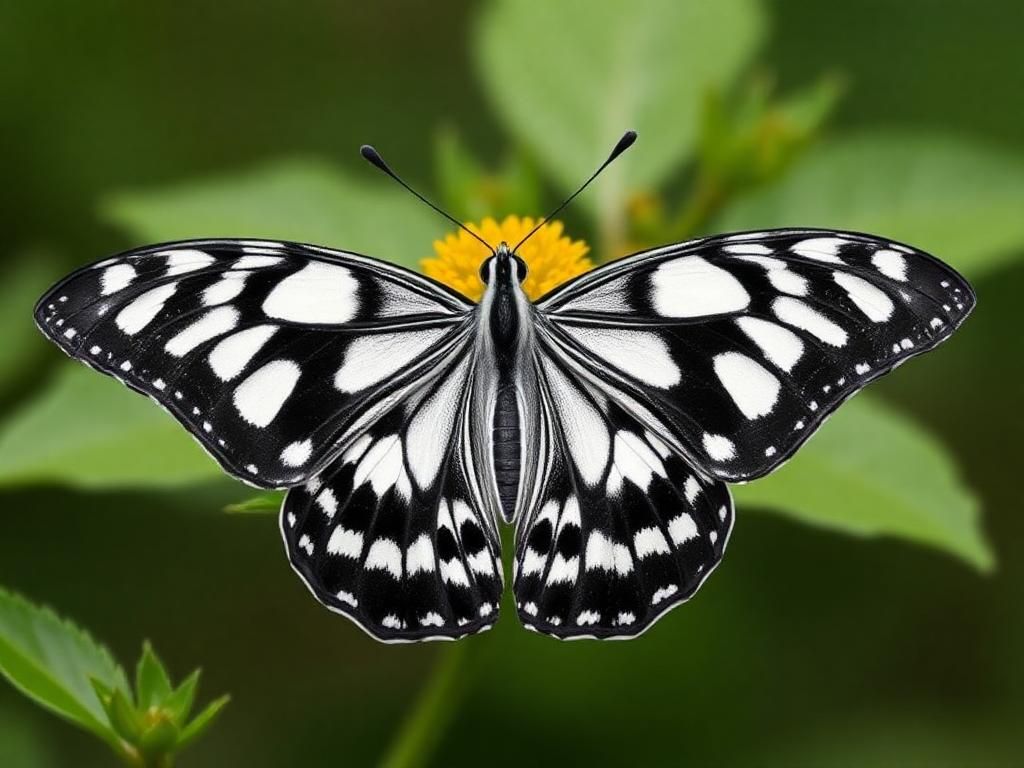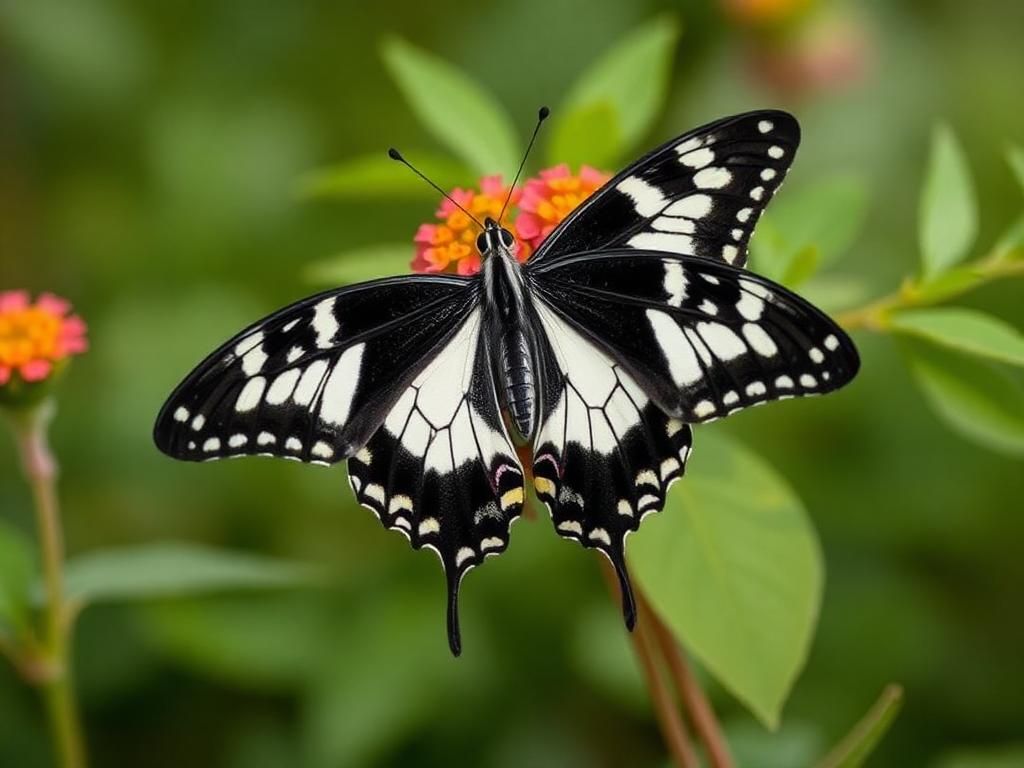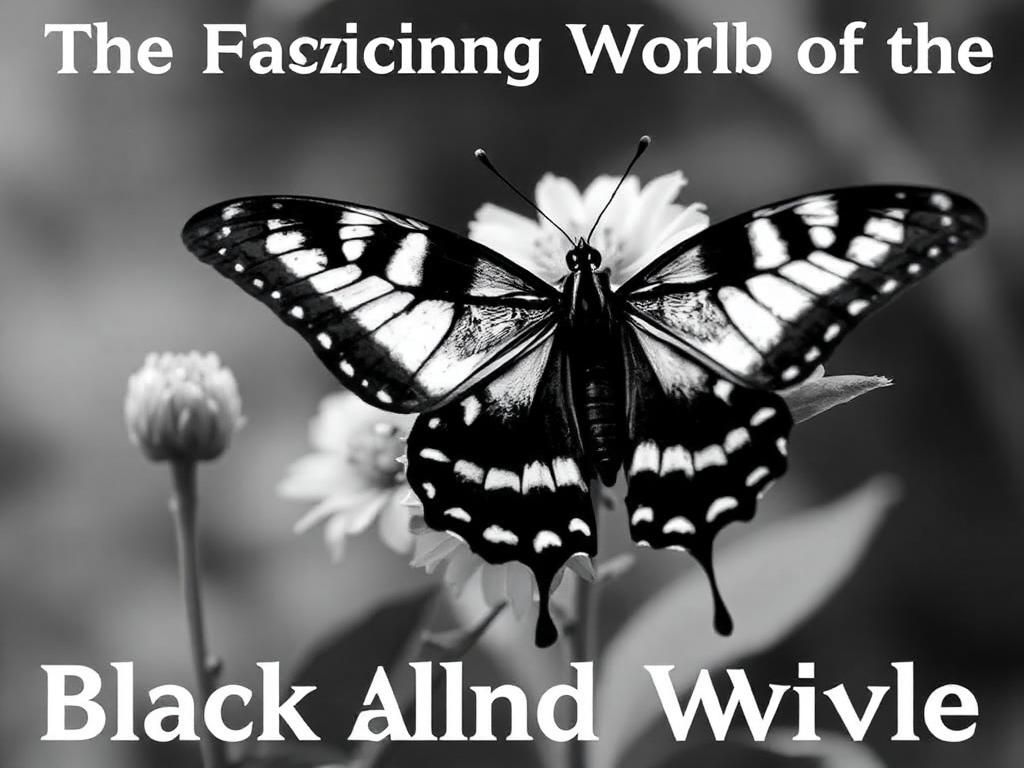Butterflies are among nature’s most beautiful and delicate creatures, captivating the hearts of enthusiasts and casual observers alike. Among the roughly 20,000 butterfly species around the globe, the black and white butterfly stands out with its striking appearance and intriguing behaviors. These butterflies are not only aesthetically pleasing but also play crucial roles in their ecosystems. This article dives deep into the realm of black and white butterflies, exploring their various species, life cycles, habitats, and even their cultural significance.
Types of Black and White Butterflies
Common Species
Swallowtail Butterflies
One of the most recognizable groups is the swallowtail butterflies, which display various colorations, including stunning black and white. The Papilio genus consists of many species that showcase this striking color combination. Their large, elongated bodies and distinctive tail-like extensions on their hindwings make them an engaging sight.
– **Habitat and Distribution**: Swallowtails can be found across diverse environments, ranging from temperate woodlands to tropical regions.
Paper Kite Butterfly (Idea leuconoe)
Known for their translucent wings patterned with delicate black lines, the Paper Kite butterfly is a spectacular example of a black and white butterfly.
– **Unique Features**: Their wingspan can reach up to 10 cm, and the intricate network of black lines resembles a delicate lace pattern.
– **Lifecycle**: The lifecycle consists of the typical four stages: egg, larva, pupa, and adult. The caterpillars thrive on specific host plants, aiding their survival.
Common Mormon (Papilio polytes)
The Common Mormon showcases significant variation including multiple subspecies exhibiting black and white patterns.
– **Variants and Subspecies**: Some individuals have a vibrant splash of red on their hind wings, while others predominantly display black and white.
– **Behavior and Feeding Habits**: They are known for their agility in flight and preference for feeding on a variety of nectar sources, including citrus flowers.
Rare Species
Black and White Lacewing Butterfly (Cethosia biblis)
This rare species of black and white butterfly can often be found in dense forest areas deep in Southeast Asia.
– **Habitat Details**: The Black and White Lacewing Butterfly prefers humid rainforests where host plants are abundant.
– **Conservation Status**: Considered vulnerable due to habitat loss, concerted conservation efforts are essential for its survival.
Banded White Butterfly (Appias lydia)
This attractive butterfly is less common, showcasing bold black and white bands.
– **Identification Tips**: Look for its distinctive banded pattern on the upper side of its wings to recognize this species.
– **Ecological Role**: The Banded White butterfly contributes to local ecosystems by serving as pollinators for various flowering plants.
Physical Characteristics
Color Patterns
The distinctive black and white coloration of these butterflies serves dual purposes; it helps them attract mates and evade predators. Such color patterns may indicate maturity and fitness, crucial for selection during mating.
Size and Wingspan
Black and white butterflies vary in size, with most species ranging from 5 to 10 cm in wingspan. When compared to other butterfly species, they often exhibit broader and more patterned wings, enhancing their visual appeal.
Other Distinguishing Features
In addition to coloration, other distinguishing features include unique wing shapes and markings, which can vary greatly between species. Furthermore, their antennae structure plays a vital role in navigation and sensing their environment.
Habitat and Distribution
Preferred Environments

Black and white butterflies are often found in diverse habitats, including:
– **Forests and Jungles**: Many species thrive in dense, moisture-rich environments providing ample food sources and shelter.
– **Gardens and Urban Areas**: These butterflies have begun to adapt to urban landscapes; planting butterfly-friendly gardens can attract them.
– **Tropical Regions**: The highest biodiversity of butterflies, including numerous black and white species, exists in tropical climates.
Geographic Distribution
Black and white butterflies are distributed worldwide, with notable populations in tropical and subtropical regions. Their presence is often influenced heavily by climate conditions, with warmer climates yielding greater biodiversity.
Life Cycle of Black and White Butterflies
Egg Stage
During the egg stage, the eggs of black and white butterflies are often laid on the underside of leaves, camouflaged from predators.
– **Description of Egg Color and Placement**: Eggs typically appear round and may be green or yellowish.
– **Duration of Incubation Period**: Depending on environmental factors, the incubation period generally lasts about five to ten days.
Larval (Caterpillar) Stage
The caterpillars exhibit remarkable physical characteristics, often sporting vibrant colors or horn-like projections for defense.
– **Physical Characteristics of the Larvae**: Many caterpillars are patterned to blend into their surroundings, providing them with essential camouflage.
– **Feeding Habits and Host Plants**: Black and white butterfly caterpillars are often specific in their dietary preferences, relying on particular host plants for nourishment and growth.
Pupal (Chrysalis) Stage
During this transformative stage, the caterpillar undergoes significant changes.
– **Description of the Pupation Process**: The caterpillar attaches securely to a surface, shedding its skin to reveal the chrysalis.
– **Duration and Metamorphosis**: Typically lasting 10 to 14 days, this stage is crucial for developing into an adult.
Adult Butterfly Stage
The emergence of the adult butterfly marks a critical phase in their life cycle.
– **Mating Behaviors and Reproduction**: Adult black and white butterflies often engage in elaborate courtship displays during mating season.
– **Lifespan of Black and White Butterflies**: On average, these butterflies live for about one to two months, depending on the species and environmental conditions.
Behavior and Ecology
Mating and Reproduction
The courtship rituals of black and white butterflies can be quite intricate, with males often performing aerial displays to attract females.
– **Nesting Habits and Family Dynamics**: Mating pairs occupy a territory and may engage in competition with other males.
Feeding Habits
These butterflies primarily feed on nectar, which they source from a variety of flowering plants.
– **Types of Nectar Sources**: Common nectar sources include flowers from plants like milkweed and lantana.
– **Role of Host Plants in Larval Development**: The choice of host plants is critical during the caterpillar stage, impacting growth and survival rates.
Predator and Defense Mechanisms

While black and white butterflies possess stunning traits, they must contend with various predators.
– **Common Predators of Black and White Butterflies**: Birds and spiders frequently target these butterflies during their vulnerable stages.
– **Camouflage and Mimicry as Survival Tactics**: Many black and white butterflies have evolved to mimic the appearance of distasteful species, deterring potential predators.
Conservation Status
Threats to Black and White Butterflies
Despite their beauty, black and white butterflies face significant threats.
– **Habitat Destruction**: Urbanization and deforestation contribute to the decline of their natural habitats.
– **Climate Change and Its Effects**: Altering weather patterns affect food availability and habitat conditions.
– **Pesticide Exposure**: Chemicals used in agriculture pose severe risks to butterfly populations.
Conservation Efforts
Numerous organizations are dedicated to preserving butterfly habitats and initiating awareness.
– **Organizations Working for Butterfly Conservation**: Institutions like the National Wildlife Federation strive for butterfly conservation through education and habitat restoration.
– **Community Initiatives and Awareness Campaigns**: Local groups often host butterfly counts and planting projects aimed at improving habitats.
– **How Individuals Can Help**: Homeowners can create butterfly-friendly gardens to provide essential habitats and food sources for local populations.
Cultural Significance
Symbolism in Different Cultures
Throughout history, butterflies have been icons of transformation and beauty.
– **Representations in Art and Literature**: Black and white butterflies feature in various artworks, symbolizing purity and metamorphosis.
– **Spiritual Meanings and Beliefs**: In many cultures, they represent the human soul or the cycle of life and death.
Role in Ecosystems
Black and white butterflies fulfill essential functions within their ecosystems.
– **Importance of Butterflies in Pollination**: As pollinators, they aid in the reproduction of numerous plant species, contributing to ecosystem health.
– **Contribution to Biodiversity**: Their presence signals a healthy environment, supporting various forms of life within their communities.
| Species | Common Name | Habitat | Conservation Status |
|---|---|---|---|
| Papilio machaon | Swallowtail Butterfly | Forests | Least Concern |
| Idea leuconoe | Paper Kite Butterfly | Tropical Regions | Least Concern |
| Papilio polytes | Common Mormon | Gardens | Least Concern |
| Cethosia biblis | Black and White Lacewing Butterfly | Rainforests | Vulnerable |
| Appias lydia | Banded White Butterfly | Tropical Areas | Least Concern |
FAQ
1. What types of black and white butterflies are the most common?
The most common types include the Swallowtail Butterflies, Paper Kite Butterflies, and Common Mormon Butterflies.
2. How can I identify black and white butterflies?
Identification hinges on their color patterns, size, and specific wing shapes. Use a guide or app to aid in identification.
3. What plants should I grow to attract black and white butterflies?
To attract these butterflies, plant nectar-rich flowers such as milkweed, lantana, and asters.
4. Are black and white butterflies endangered?
While many species are not classified as endangered, some such as the Black and White Lacewing Butterfly are vulnerable due to habitat loss.
5. What is the lifespan of a black and white butterfly?
Typically, they can live for one to two months, depending on the species and environmental factors.
6. How do black and white butterflies contribute to the ecosystem?
They play crucial roles as pollinators and are indicators of a healthy ecosystem.
7. Can black and white butterflies survive in urban areas?
Yes, black and white butterflies are adapting to urban environments as gardens and parks mimic their natural habitats.
8. What can I do to help butterfly conservation?
Engaging in local conservation initiatives, planting butterfly-friendly plants, and avoiding pesticides can help create safer habitats.
9. How do climate changes affect black and white butterfly populations?
Climate change can disrupt food sources and breeding patterns, potentially leading to declines in populations.
10. Where can I learn more about butterflies?
Visit local butterfly conservatories, participate in butterfly walks, or visit reputable websites dedicated to entomology and conservation.
